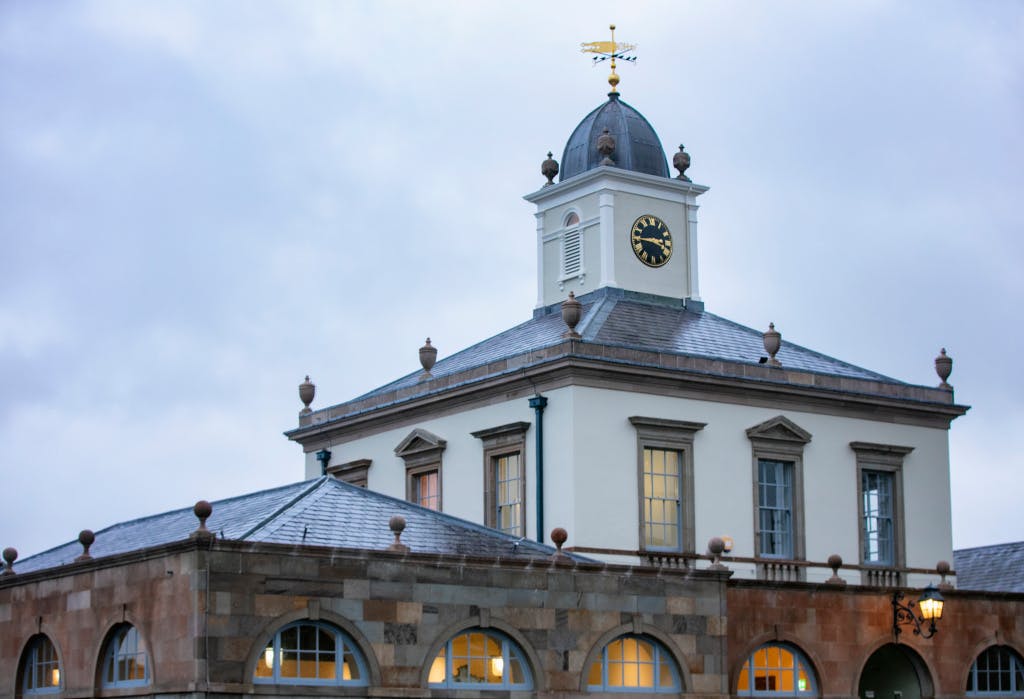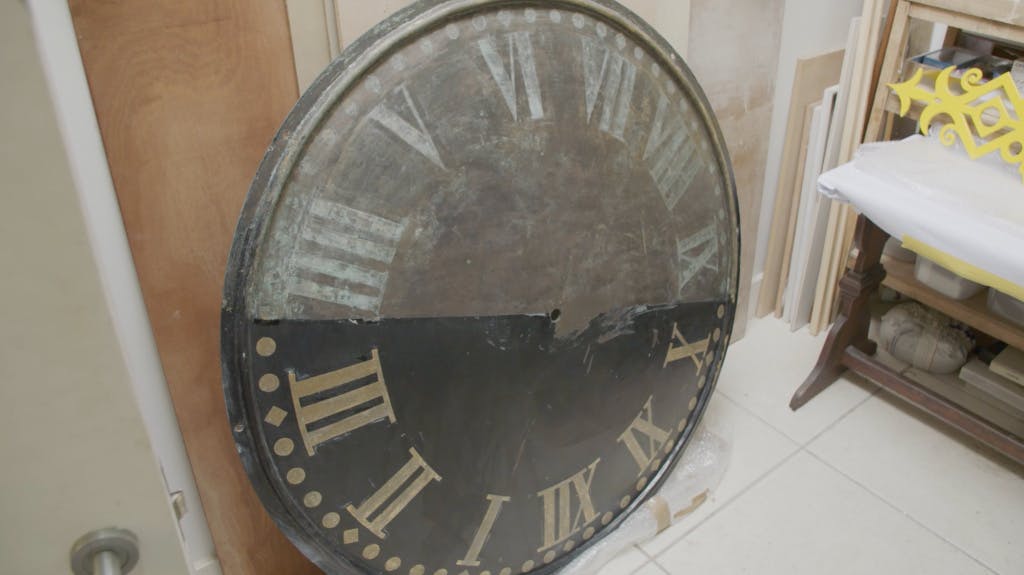Restoring Hillsborough's Courthouse Clock
Date: 18 January 2019
Author:
David Orr
An exciting conservation project has been undertaken in Hillsborough. The courthouse clock - which stopped over 30 years ago - has been revived and is chiming once again. Our conservator David Orr was thrilled to discover the history of this important horological piece...
This content is hosted on YouTube
This content may be using cookies and other technologies for which we need your consent before loading. To view the content, you need to enable cookies for "Targeting Cookies & Other Technologies".
Manage CookiesThe management of the historic Court House within Hillsborough town was officially handed over to Historic Royal Palaces in the summer of 2018. It is a Georgian building, built in the late 1700s, which is located directly opposite the castle; the clock tower above this beautiful building is a feature in the skyline of the town.
As part of the project to clean and revive the building, the Conservation and Collections Care department undertook the refurbishment of the clock mechanism, with a view that it would be returned to an operating condition for the community to once again use and enjoy. It is believed the clock sat idle for over 30 years, having been stopped due to poor time-keeping.
In August 2018, Keith Scobie-Youngs from the Cumbria Clock Company, who services the 16th-century astronomical clock at Hampton Court Palace, carried out an assessment on the mechanism and dials to determine the condition and history of the timepiece. He has described it as "very interesting and important example of turret clock horology".
The clock and bell were made in 1810 by John Moxon, with the inscription Alternate Duplex Detached Escapement, invented by William Congreve. This has been deemed to be rare; there are not any other turret clocks known to have been fitted with this escapement. Congreve was a well-known inventor and took a great fascination in the development of weaponry and early rockets. Unfortunately, this original mechanism was removed and replaced with a recoil escapement later, leaving only the bell as the earliest surviving piece.
In early September, the Clock Company carefully recorded, inspected and removed each piece of the clock, packing each part and transporting it to their workshops in Cumbria. Once in the workshop each piece was carefully cleaned, checked for damage and if required, repairs were undertaken. Once complete, the clock was assembled in the workshop and left "on test" for a number of weeks to ensure that it was operating correctly and keeping time. Finally, Keith was confident and happy with the work; it was dismantled, carefully packed and brought back to Hillsborough.
The clock dials and the weather-vane were removed and couriered to the Decowell conservation studio in Belfast for the faces to be analysed and re-gilded accordingly. Research suggested the roman numerals on the clock were originally slightly smaller, and were surrounded with a gilt ring around the perimeter of the dial; subsequently this was the style chosen.
The overall re-assembly of the clock took four days; part of this time was including the addition of an automatic winding and night silencing device. Originally the clock would have been wound once a week manually and the bronze bell struck every hour of the day. The night silencing device stops the bell being rung between 9pm and 9am, allowing the townspeople to have a restful night!
David Orr
Conservator, Hillsborough Castle
More from our blog

Caring for the Tower of London through lockdown
11 May 2021
While the Tower of London was closed to the public during the Covid-19 pandemic, much work was underway to protect the fabric of the building and the future of the palace. Assistant Curator Alfred Hawkins reveals one of the important projects that he has been working on behind the scenes.

Festooned with Mystery: Wall Paintings at the Banqueting House
07 November 2019
An investigation into some mysterious mural paintings in the Banqueting House took place with a scaffold built for conservators to inspect the often overlooked wall paintings just beneath the magnificent ceiling.

New life for the glasshouse at Hillsborough Castle
20 December 2019
It's been an exceptionally busy year for the gardens team at Hillsborough Castle, with the doors to the extensive estate thrown open to the public every day for the first time. Time has also been found to transform the glasshouse, a modest but attractive corner of the gardens that had long been overlooked.





